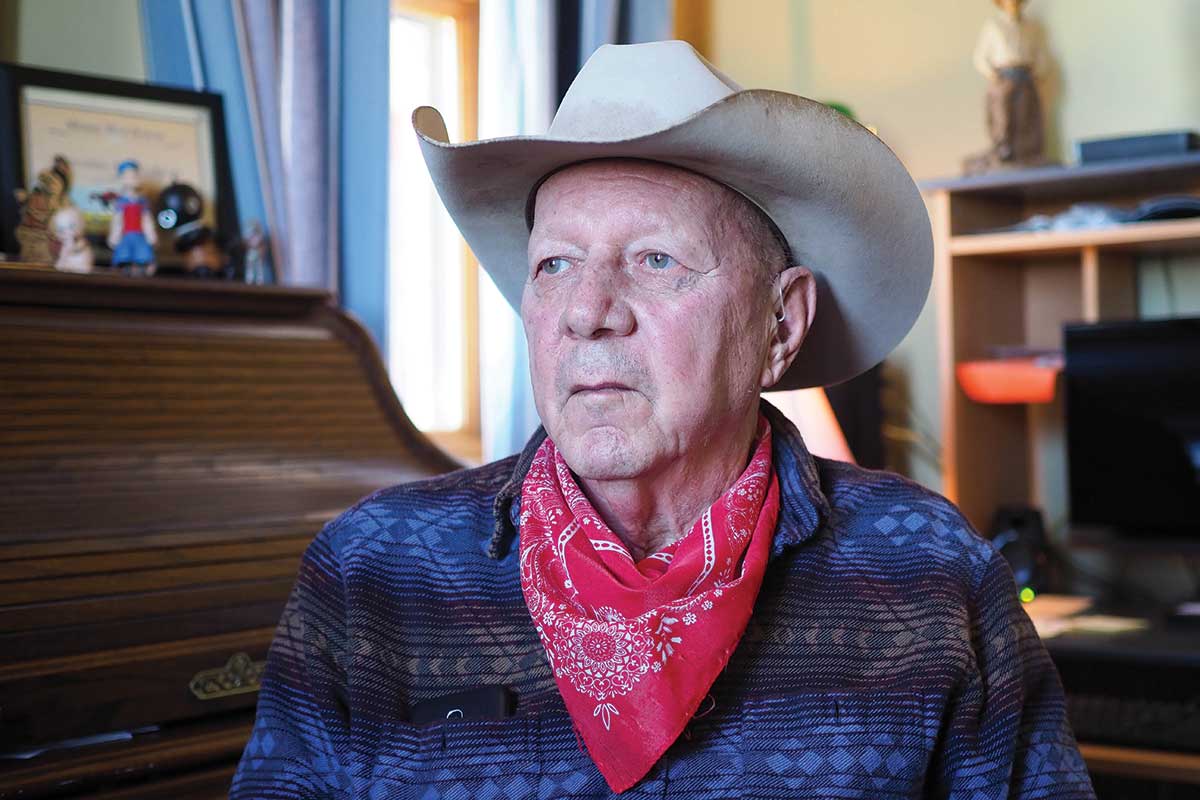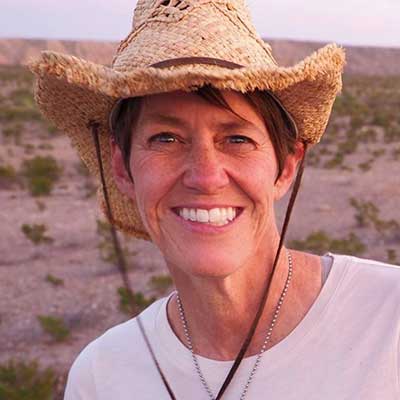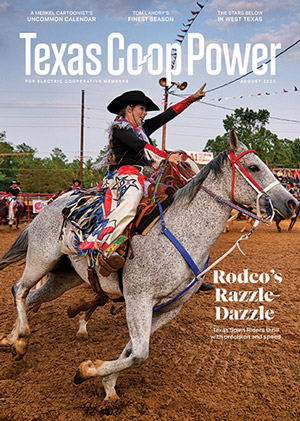The Bona Fide Original Real Texas Calendar doesn’t start with January like most calendars, but why should it?
Texas didn’t start in January, either.
At least that’s how cartoonist Roger Moore, a third-generation Texan who has been making the calendar since 1997, sees it. In classic maverick style, Moore’s calendar begins on March 2, the date in 1836 when Texas settlers famously declared their independence from Mexico. A lot has happened in Texas since then, of course, and Moore addresses much of it with humorous and history-packed notations.
Besides the calendar, Moore has written The Handy Pocket Tex-Book: A Pocket-Sized Guide to Essential Information That Every Good Texan Must Know About Texas, which informs readers about such necessary facts as the official state dog breed (blue lacy), the official state vehicle (not the pickup truck but the chuck wagon) and the official state snack (tortilla chips and salsa). Kids can read his Critters of the Lone Star State, filled with trivia about javelinas, armadillos and rattlesnakes, and Slim’s Hat, which teaches the proper uses of a cowboy hat beyond decorating the top of a person’s head. And Moore has produced a collection of his favorite cartoons, Texas, My Texas.
But the calendar remains his biggest seller.
Each month features a full-page cartoon celebrating an important Texan or poking irreverent fun at something that happened on Texas soil. Interesting factoids about the Lone Star State and the people who have lived here pepper every page.
Flip through a few copies and you’ll learn that Emma Banister of Coleman County became the first female sheriff in the U.S. on August 1, 1918; Popeye the Sailor was born in a comic strip by Elzie Crisler Segar in the Victoria Advocate on January 17, 1929; and Texan Van Cliburn won his first international piano competition in Moscow on April 14, 1958.
Moore, 77, lives on a small farm near Merkel, west of Abilene, with his wife, Martha. On a cool spring morning, he wore a cowboy hat, red bandana, blue jeans and boots as he sat at a lighted drawing table in his home office and used an archival fine-tip black pen to sketch out a quick cowboy. A pair of tiny boots doubled as a lamp base behind him; a wooden roll-top desk stood in one corner; and a framed Texas flag hung on the wall.
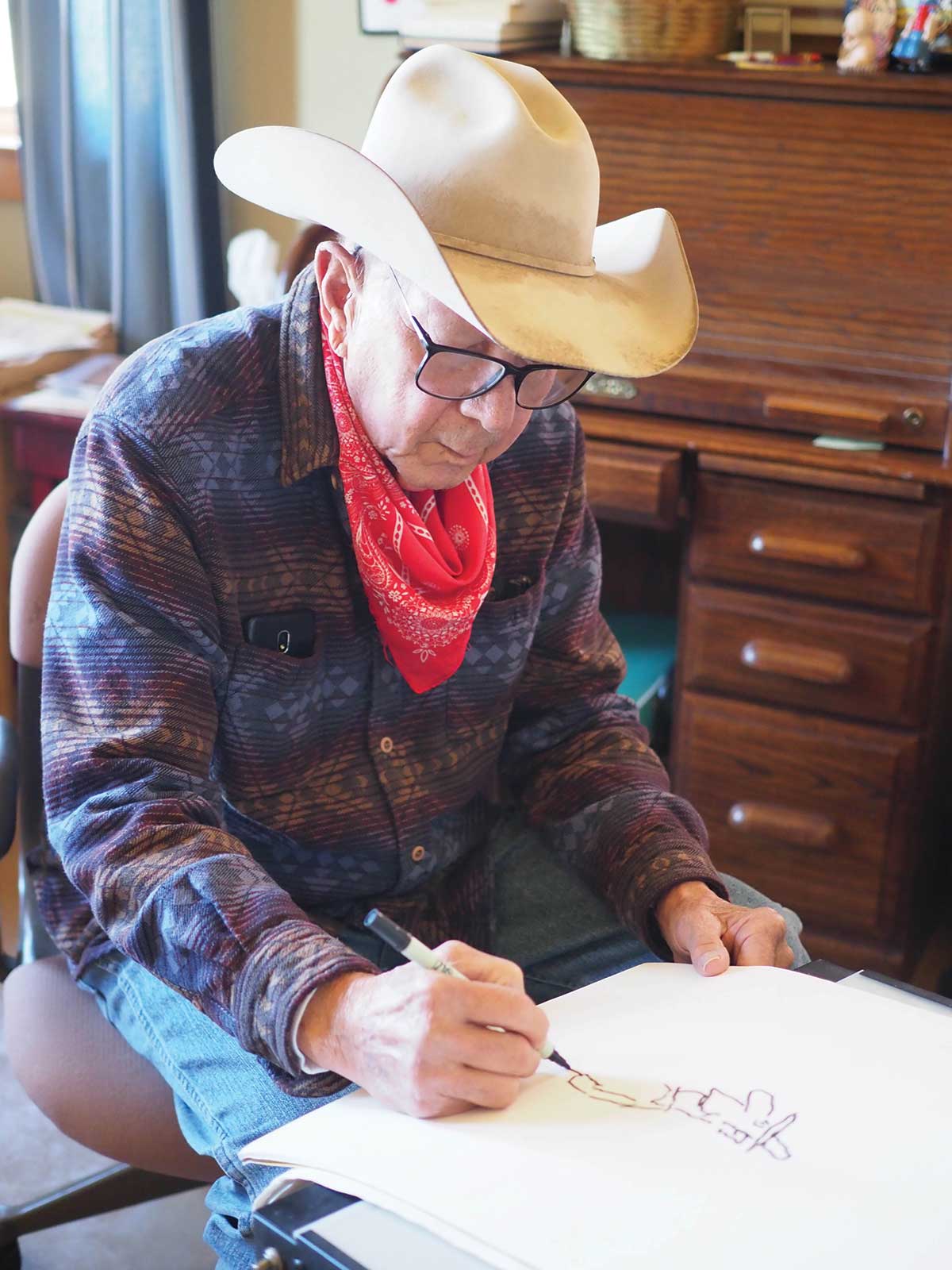
Moore sketches a cowboy at his home near Merkel.
Pam Leblanc
“I can’t remember when I wasn’t drawing,” he says with a wisecrack. “I tell people I drew before I walked when I was 13.”
Moore was born in Beaumont and later moved to Merkel. His mother, who liked to make delicate pencil sketches, encouraged him to draw.
“She told me it was all right to be an artist, even when I took some heat for it at school,” Moore says. “I got some paddlings for drawing in class.”
Moore was a standout athlete in high school. After college, he briefly coached at a high school in Hamlin, about 30 miles north of Merkel. He went on to work as a foreman for Texas Instruments, then began selling textbooks. He launched his own advertising agency, called Moore & More, after moving to Austin in 1971. About that time, he began selling editorial cartoons to newspapers.
“I went to a couple of newspapers and said, ‘Y’all need a cartoonist,’ ” Moore says. At first, he drew political cartoons but eventually switched to less controversial topics. “I gave up on politics. I really wasn’t all that into it, but they liked my style and my price, which was damn near nothing.”
His cartoons—now focused on topics near to Texans’ hearts, like Stetson hats, barbed wire, pink grapefruit and cowboys (football and otherwise)—still appear in about 25 small newspapers around the state. A binder filled with hundreds of sketches rests on his desk.
“I’m not very good, but I’m real fast,” says Moore, a Taylor Electric Cooperative member. In his heyday, he could whip up a cartoon in a couple of hours. “The hard part is the idea, and it needs to be mildly amusing. It’s stupid to have a cartoon that doesn’t make you giggle a little bit.”
But cartoons, he says, are much more than drawings.
“Cartooning is not artwork; it’s enhancing the words,” Moore says. “First, you’ve got to come up with the idea.
I think of an event and try to come up with a play on words. That usually leads to an idea. Some come easy, some don’t.”
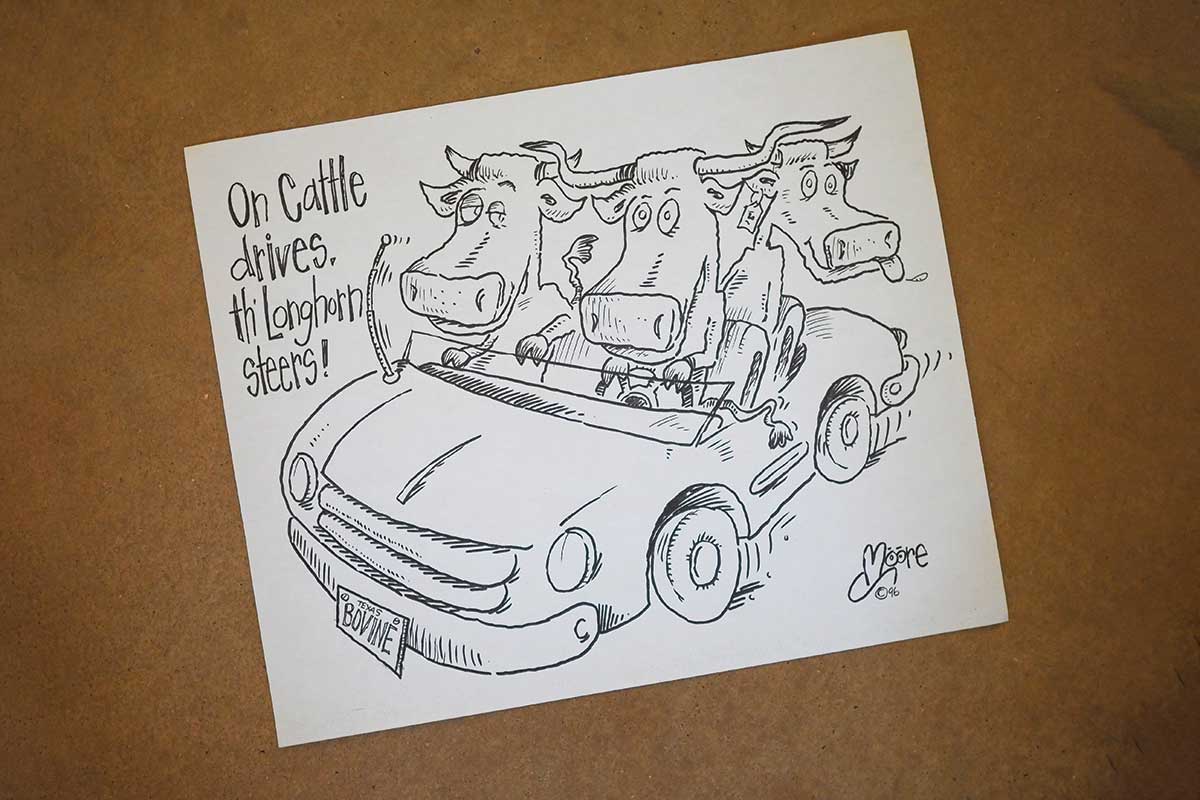
Moore hopes his cartoons “make you giggle a little bit.”
Pam LeBlanc
Moore says he gets his best inspiration while driving Texas back roads and highways.
“Everything happens in my pickup. It’s a think tank,” he says, adding that he was driving between Austin and Abilene when the idea for a calendar first popped into his head. He and an assistant researched the state’s history and picked out people and events to highlight.
Lou David Allen, a retired NASA engineer and former mayor of Merkel, met Moore when they were high school students, but they became friends after the cartoonist moved back to Merkel in 2008.
“I say every person is a poem waiting to be written. Roger thinks every circumstance is a cartoon waiting to be expressed in his iconic way,” Allen says. “He understands people. He reads them pretty quickly—and sometimes will announce their faults.”
Moore was diagnosed with Parkinson’s disease two years ago, so cartooning takes longer now. Lines start out squiggly, getting smoother as his muscles warm up. He’s trying to shift to a slightly different style of drawing, without as many curves, dots, and dashes—anything that requires fine precision.
“It takes about 10 times as long,” he says. “It’s frustrating, to say the least.”
But Moore plugs on, digging deep into the can-do spirit that makes Texans Texan.
“It’s the only thing I can do that provides a release,” Moore says. “I’ve got creative ideas about a lot of things, but I can only cartoon. And I know I can do that, even with Parkinson’s.”
